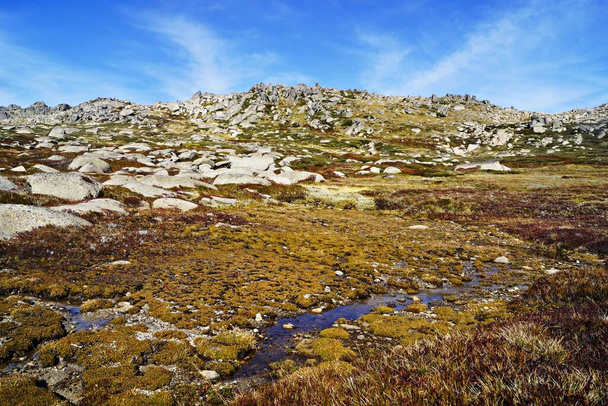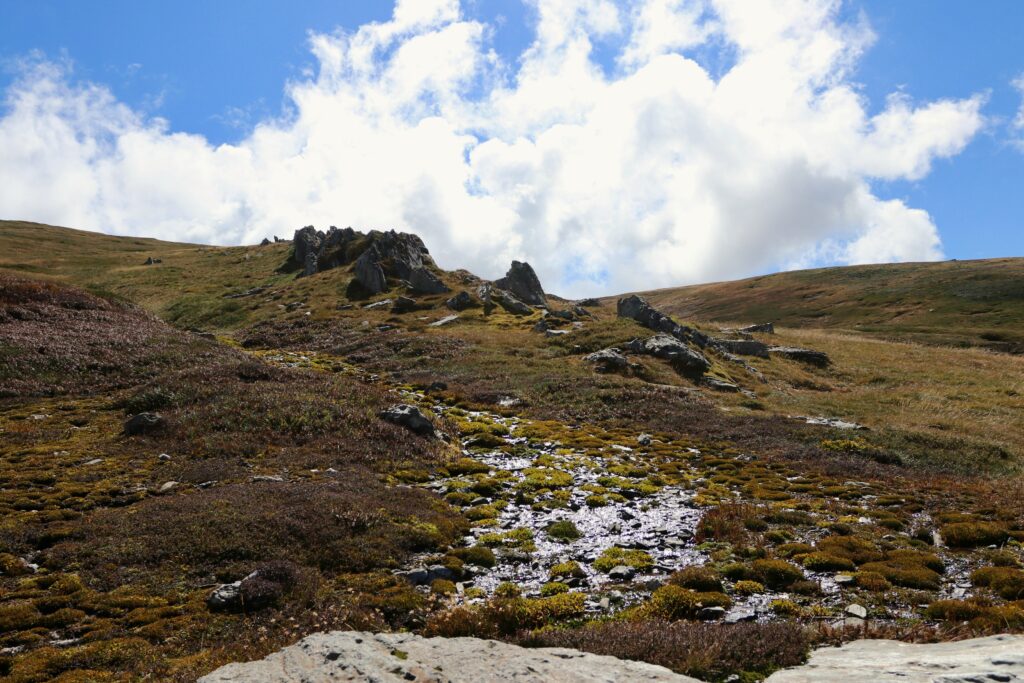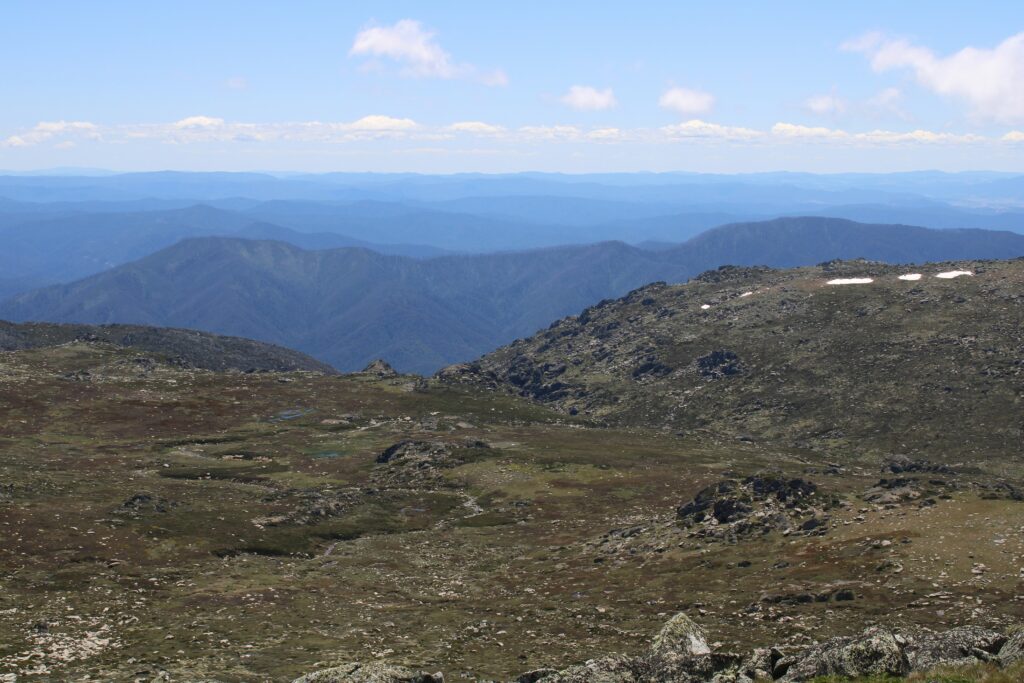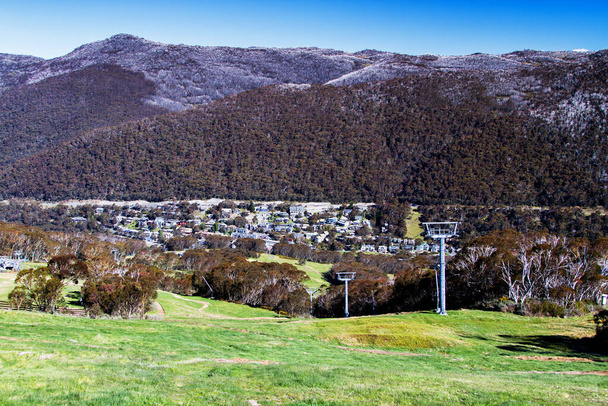Mount Kosciuszko is an awe-inspiring natural wonder that beckons adventurers and nature lovers alike to explore its majestic beauty. As the highest peak in Australia, this iconic mountain holds a special place in the hearts of many, boasting not only breathtaking panoramic views but also a rich cultural and historical significance. Join me on a virtual journey as we delve into the allure of Mount Kosciuszko, discovering the wonders that await atop its lofty summit.

Rising to a height of 2,228 meters (7,310 feet) above sea level, Mount Kosciuszko stands proudly in the snowy peaks of the Snowy Mountains in New South Wales. Named after the Polish-Lithuanian military leader and statesman Tadeusz Kościuszko, this mountain serves as a symbol of resilience, strength, and natural beauty. Every year, thousands of hikers and outdoor enthusiasts flock to its slopes, eager to conquer its summit and immerse themselves in the serenity of the alpine landscape.
More:Read about on Discover The Majestic Beauty of Tasmania’s Cradle Mountain
The journey to the summit of Mount presents a variety of trekking options, catering to adventurers of all skill levels. The most popular route is the Main Range Track, a scenic 18.6-kilometer (11.6-mile) return hike that winds its way through the rugged high country of Kosciuszko National Park. Along the way, hikers are treated to sweeping vistas of alpine meadows, glacial lakes, and towering peaks, providing a feast for the eyes and a balm for the soul.

As you ascend the mountain, the air grows crisper, the vegetation transforms into hardy alpine flora, and the landscape opens up to reveal the vast expanse of the Australian Alps. The sense of accomplishment that comes with each step closer to the summit is palpable, fueling your determination and excitement. And when you finally reach the top, standing atop the highest point in the land down under, the feeling of triumph and awe is indescribable.
From the summit of Mount Kosciuszko, the world unfolds before you in all its glory. To the south, the rolling plains of Victoria stretch out in a patchwork of green and gold, while to the west, the rugged peaks of the Main Range dominate the horizon. Far to the east, the shimmering waters of Lake Jindabyne glisten in the sunlight, reflecting the azure sky above. And to the north, the vast wilderness of the Snowy Mountains National Park beckons, inviting further exploration and discovery.

But Mount Kosciuszko is more than just a physical landmark; it is also a place of cultural and historical significance. Named in honor of Tadeusz Kościuszko, a hero of both the American and Polish struggles for independence, the mountain serves as a reminder of the values of freedom, courage, and solidarity. As you stand atop its summit, you can’t help but feel a sense of connection to the past, to all those who have come before and all those who will come after, united in their love for this land and its natural wonders.
In addition to its natural and cultural appeal, Mount Kosciuszko also plays a vital role in the ecosystem of the Australian Alps. The alpine environment is home to a diverse array of plant and animal species, many of which are found nowhere else in the world. From hardy snow gums to delicate alpine wildflowers, from elusive mountain pygmy possums to majestic wedge-tailed eagles, the biodiversity of this region is truly remarkable. By visiting Mount Kosciuszko with respect and care, we can help ensure that this precious ecosystem remains intact for future generations to enjoy.
Visit Here Odishalifestyle
As the sun begins to dip below the horizon and the shadows lengthen across the mountain landscape, it’s time to begin the descent from Mount Kosciuszko. Each step brings you closer to the valley below, where the promise of a warm meal, a cozy fire, and a comfortable bed awaits. But as you make your way back through the alpine meadows and snow gums, the memories of your journey linger, imprinted in your mind and heart forever.

Mount Kosciuszko is a place of wonder, beauty, and inspiration, a testament to the power and majesty of the natural world. Whether you come to conquer its summit, to bask in its panoramic views, or simply to connect with nature in all its glory, this iconic mountain will leave an indelible mark on your soul. So lace up your hiking boots, pack your water bottle, and set forth on an adventure of a lifetime to Mount Kosciuszko – a truly unforgettable experience awaits.
FAQ For Discover Breathtaking Landscapes Mount Kosciuszko
Where is Mount Kosciuszko located?
Mount Kosciuszko is located in the Snowy Mountains of New South Wales, Australia. It is part of the Main Range of the Snowy Mountains and is in the Kosciuszko National Park.
Is Mount Kosciuszko the highest mountain in Australia?
Yes, Mount Kosciuszko is the highest mountain in Australia, standing at an elevation of 2,228 meters (7,310 feet) above sea level.
How can I reach the summit of Mount Kosciuszko?
The most popular way to reach the summit of Mount Kosciuszko is via the Main Range Track, a relatively easy walking track that starts at the Thredbo Village. The hike to the summit is a rewarding experience with panoramic views of the surrounding alpine landscape.
When is the best time to hike Mount Kosciuszko?
The best time to hike Mount Kosciuszko is during the summer months (December to February) when the weather is milder and the snow has melted, making the trails more accessible. It is also possible to hike in the autumn months, but winter hiking requires specialized equipment and experience due to snow-covered conditions.
Are there other activities to enjoy in the area besides hiking?
Yes, besides hiking Mount Kosciuszko, visitors can enjoy mountain biking, fishing, horseback riding, and skiing in the winter months. The surrounding Kosciuszko National Park also offers a variety of scenic drives, camping sites, and wildlife watching opportunities.
Can I camp near Mount Kosciuszko?
Yes, camping is permitted in designated camping areas within the Kosciuszko National Park. Campers are required to obtain a permit for overnight stays, and facilities range from basic campsites to more developed campgrounds.

